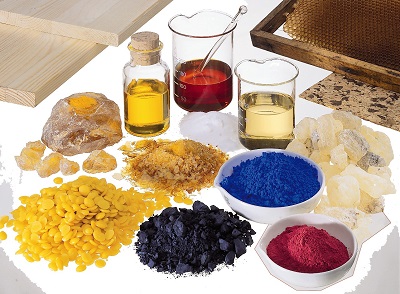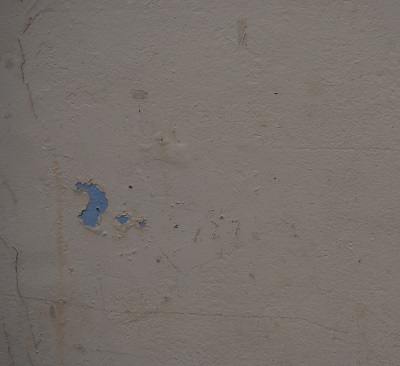A Guide to Paint & Ty-Mawr's Paint Ranges
Tŷ-Mawr Posted this on 10 Jan 2023
 Paint in its simplest form consists of a binder, a solvent and a pigment. The binder allows the pigment (colour) to stick to the surface, whilst the solvent gives it flexibility and allows it to be workable. Modern paints are far more complex and have numerous added ingredients to facilitate artificial drying, ease of application, improved shelf-life etc. However, the luxury of having fast drying, non-drip paints has some serious effects on the environment, the performance of the building as well as our own health.
Paint in its simplest form consists of a binder, a solvent and a pigment. The binder allows the pigment (colour) to stick to the surface, whilst the solvent gives it flexibility and allows it to be workable. Modern paints are far more complex and have numerous added ingredients to facilitate artificial drying, ease of application, improved shelf-life etc. However, the luxury of having fast drying, non-drip paints has some serious effects on the environment, the performance of the building as well as our own health.
Paints and the Environment
The manufacture of synthetic paints produces up to 10 tonnes of waste per 1 tonne of paint! Natural paints offer an alternative to vinyl resins and petrochemical solvents. They are often based on traditional recipes using natural, renewable products such as plant oils. Many of the natural paints on the market today have a good track record, e.g. some of the German paints have been produced and successfully used for over a 100 years. They are formulated to give results comparable to the chemically enhanced paints that most of us are use to, but with minimal environmental impact. Synthetic paints are not only harmful during their manufacture, they do not ‘degrade’ and therefore leave waste, often hazardous, for landfill.
Paints and Health
It is now recognised that professional painters/decorators have an increased risk of contracting serious diseases – the World Health Organisation classed painting as a carcinogenic profession in 1989. Synthetic paints contain ingredients which can cause a variety of complaints such as lung problems, nausea and headaches.
Many manufacturers are reducing the ‘odour’ of their paints but this does not mean that they are any safer. In fact, they can be more dangerous, as one may not ventilate the room in the same way.
Most of us spend around 90% of our time indoors, but indoor air can be three times more polluted than outdoor air. Polluted indoor air is one of the top five hazards to human health. Paints are among the leading causes of polluted indoor air as they release low level toxic emissions into the air for years after application. The source of these

toxins is a variety of VOC's (Volatile Organic Compounds). Ty-Mawr’s new paint range do not contain VOCs and are therefore much safer.
Paints and Building Health
Modern plastic paints seal our rooms. In much of our documentation, we describe why it is necessary for a building to ‘breathe’, these paints will trap moisture and will then bubble and blister or they may cause excessive condensation which can lead to mould growth. All of Ty-Mawr’s paints are micro-porous, allowing moisture to pass through them keeping the building ‘breathing’ and thus ensuring the longevity of the building components (such as timber, brick and stone). Such paints also help to regulate the humidity of our rooms by controlling damp, condensation etc
Natural Alternatives
Ty-Mawr offer two alternatives both which offer a beautiful, soft aesthetic which maintains the right ‘feel’ in and on traditional buildings:
mineral paints for internal and external use, as well as the traditional limewash, Ty-Mawr also stock the Beeck’s pure mineral paints, these paints –
- have a "breathability" (water vapour permeability) comparable to limewash which results in healthier, drier buildings but are also water-repellant.
protect against natural and chemical weathering, smog, and dirt penetration as well as algae and fungal growth; - are incombustible and light fast.
- are completely non-toxic and contain no VOC's, this makes them safe for you and your familiy to work and live with.
- are extremely durable as they bond to the surface so will last 25-30 years.
Ty-Mawr’s new colour ranges in all mineral paints are now available, it makes them more accessible to more people than ever before. Printed colour cards are also available, please order using this website or call 01874 611350 for your copies now.
The wide range of paints means that we have a paint for every background and every environment, if you have any specific queries about dealing with a wall/building, please email our product advisers at tymawr@lime.org.uk.
